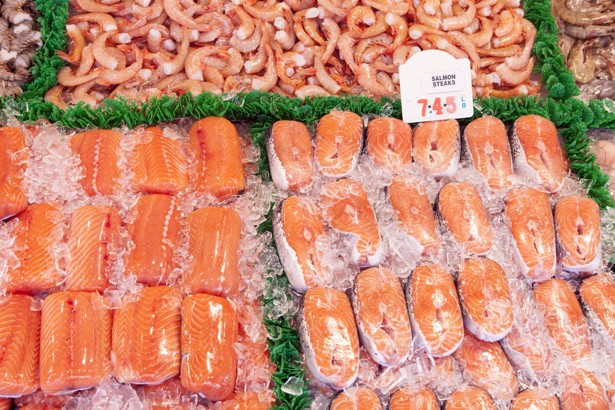"High Price for a Low Fish"
"We kept thinking we'd find a success story, a place where seafood wouldn't be mislabelled."
"Every single study that we reviewed, except for one, found seafood fraud."
"It is likely that the average consumer has eaten mislabelled fish for sure. You're getting ripped off ... you're paying a high price for a low fish."
"This report [on seafood fraud] reveals that it's a global problem. And it's not going to go away on its own."
Beth Lowell, senior campaign director, Oceana
According to the ocean conservation group Oceana, one in five seafood samples undergoing tests on a global sweep turned out to be completely other than what the menu or the packaging containing the fish claimed it to be. Over 25,000 seafood products were sampled and when the group analyzed the contents, a full twenty percent were proven to be labelled incorrectly.
The group, whose lead author was their senior campaign director, analyzed over 200 previous studies from 55 countries. One of the studies examining the situation in Italy identified that 82 percent of the 200 samples of perch, grouper and swordfish had been mislabelled. In South Africa, another study pointed out, King mackerel, known to be high in mercury content, was billed as "barracuda" and "wahoo".
And in Hong Kong, one only of 29 samples of "abalone" product was correctly identified on the label. In Southern California, two sushi chefs in Santa Monica sold endangered whale meat which they had identified as "fatty" tuna, and for their troubles they were charged with fraud, as a result. An interactive map was produced by the Oceana researchers demonstrating where cases of inauthentic fish were found.
Asian catfish which, with its white flesh is readily disguised when presented as fillets and drenched in sauce, turned out to be the most common of the impostor fish, sold in lieu of 18 types of more costly fish species including perch, cod and grouper. The group's study include DNA analyses from peer-reviewed papers, newspaper investigations and Oceana's own previous studies.
Examples were found of mislabelling practices reflecting every level of the supply chain handling seafood; the wholesaler, the importer and the retailer. Roughly 80 percent of the studies took their samples at grocery stores and restaurants, reflecting the final stage of the supply chain, resulting in retailers being found to have higher levels of mislabelling. The consumer, needless to say, remains blissfully unaware.
The researchers simply presented what they discovered, making no effort to apportion blame. They were, in fact, not certain whether food stores and restaurants deliberately make an effort to deceive clients, or whether they are themselves victims of false claims when they purchase the fish they later highlight with uncertain identities.

Occasionally, substituted fish turned out to be, in reality, an endangered species. Instances occurred in Brazil where "shark" was actually fish meat from the large-tooth sawfish, critically endangered, as is highlighted by the International Union for Conservation of Nature. Stricter regulation for fish tracking through the supply chain is considered to be one way that this kind of fraud can be controlled.
Labels: Food Industry, Fraud, Health, Safety

0 Comments:
Post a Comment
<< Home